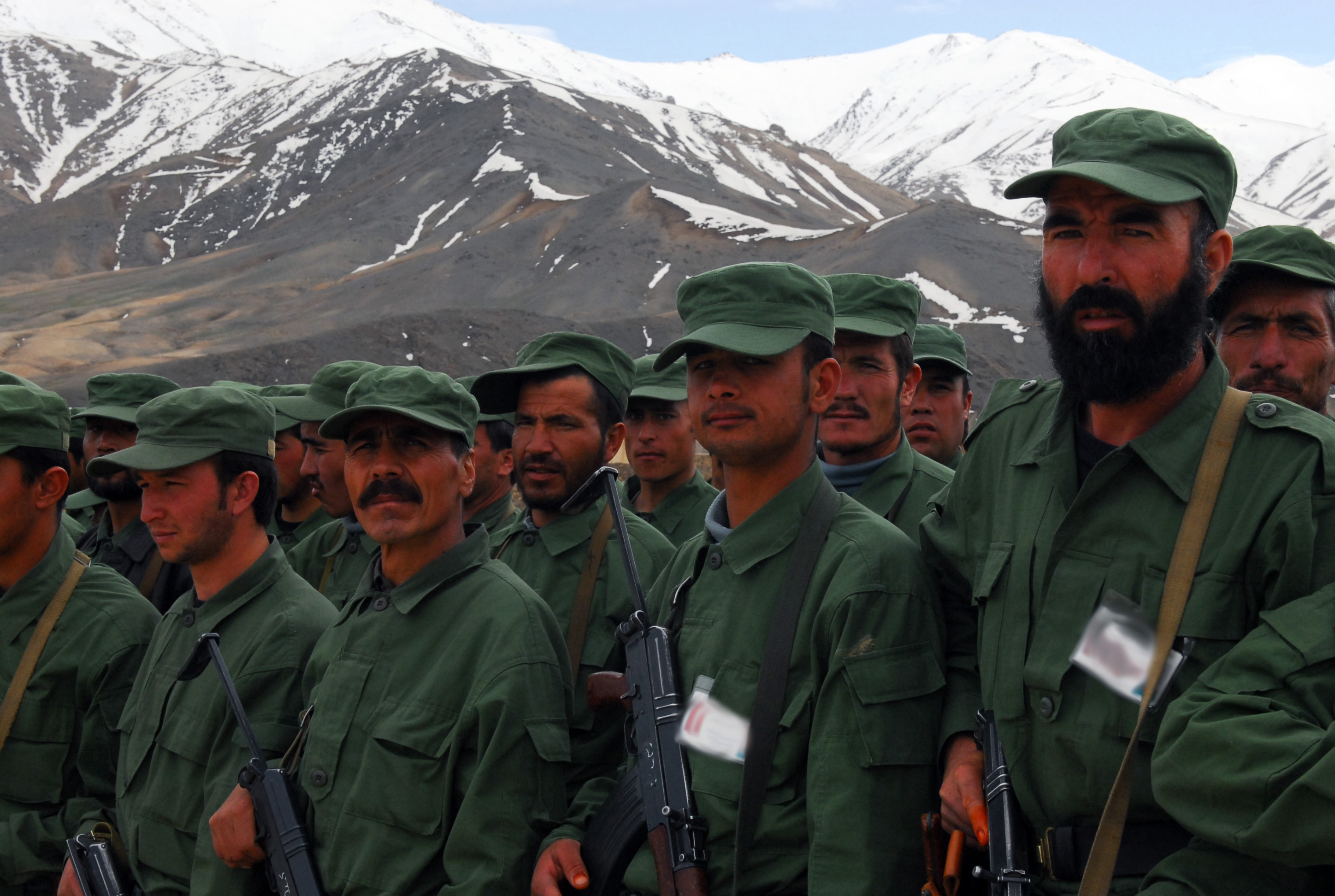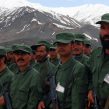
Can Afghanistan’s New “Guardian” Militia Restore Security in the Provinces?
Publication: Terrorism Monitor Volume: 7 Issue: 20
By:

As the security situation in Afghanistan worsened, there was an increase in Taliban attacks in south and central Afghanistan, especially in Wardak province, 30 kilometers west of Kabul. The government and international forces decided to distribute arms to local people to defeat the Taliban and other insurgents in their respective villages and districts. The formation of the Afghan Public Protection Force (better known as the “Guardians”) is a pilot project operating in the Jalriz district of Wardak province and in Wardak’s provincial capital of Maidan Shar. Wardak Province is located in central Afghanistan and has a majority Pashtun population with a significant Hazara (Shi’a) minority.
Recruits to the new militia are chosen by local elders before receiving Kalashnikov AK-47 assault rifles and three weeks of training from the Afghan national police. The militia is not intended to confront the Taliban in combat but is instead meant to serve as a kind of local watch. As such, they are equipped with radios and cell phones to call for assistance from American forces or the Afghan National Army when necessary (NPR, June 3). Most of the Wardak Guardians are loyal to Tor Gol, a former anti-Soviet mujahid.
Shahedullah Shahed, spokesperson for the Wardak governor, says that since the Guardians began operating in Jalriz district and Maidan Shar there has been a significant improvement in security in these places. [1] According to Shahed, Jalriz was previously one of the worst districts regarding security. Government employees, NGOs and construction companies could not travel on the Kabul-Bamyan highway that goes through Jalriz district as there were always Taliban attacks on the highway. Since the Guardians began operating the district has become a secure and peaceful area. According to Shahed, “Jalriz was one of the most difficult and insecure districts in Wardak province. Those who were working for the provincial government could not go to their homes in Jalriz district because of the Taliban and insurgents, but now there are 243 Guardians ensuring security for local residents. Since they are there the situation is completely changed and everyone can go to the district and walk freely.” According to Shahed, the Guardians are now operating only in Jarliz district and Maidan Shar, but soon the program will be expanded to all districts of Wardak province. “We have registered many people for this program in Behsood and other districts of Wardak.”
Local residents of Jalriz say that the Guardians are good for the region and since their deployment the situation has improved. Shrin Aga, a resident of Jalriz, says the Guardians have launched their checkpoints on the road and are ensuring security. “We are happy with the Guardians; they are good people, they are always on the road and patrolling around villages. During the day there are no Taliban activities, but during the night we do not know because people are not coming out from their house at night.” [2] Another resident of Jalriz, Lul Gul, agreed with Shirin Aga. Previously there were Taliban walking freely in Jalriz district during the day and night, launching attacks on government and international forces convoys, but now the Taliban cannot be seen during the day. “The only things they can do are planting roadside bombs and exploding army vehicles.”
A resident of Jalriz who did not want to be named said that most of the people now working as Guardians in his district used to belong to jihadi groups. According to this individual, those Guardians who have disputes with local people are misusing their new weapons. “Some of the Guardians who have personal problems with some people are going to those people’s houses and arresting them as Taliban.”
A resident of the provincial capital, Mohammad Qasim, says the only villagers who can go and register their names as Guardians are those who live close to the district center, near Afghan National Army and international forces bases. “In my village, which is far away from the provincial center Maidan Shar, no one is ready to go and work for the Guardians. They are afraid of the Taliban, because if they work for the Guardians the Taliban will come to [a volunteer’s] house during the night and will kill him and make problems for him because there is no government control in my village during the night.” Another resident of Maidan Shar said the Guardians are efficient during the day but during the night they are not able to patrol around the villages.
Political analyst Fazal Rhamn Orya agrees with the concerns of local people regarding the Guardians’ misuse of power. [3] According to Orya, the militias now being formed will be a problem in the future. Orya warns that, while the militias misuse their power against the local people today, tomorrow they will use their guns against the government and in time the government will not be able to control them. “These are not Guardians, they are the former militias. The Interior Ministry changes the name from militias to Guardians, but in fact they are not good for the future of Afghanistan. These Guardians will raise ethical problems; they will use their guns against each other in near future.”
Orya says that the Interior Ministry has no authority to build these kinds of militias and notes that there is no place in the Afghan constitution for creating militias. “These kinds of militias have had no positive result in Afghanistan history.”
But Shahedullah Shahed disagrees with Orya. Shahed claims the Guardian units are not militias; they are protecting public places and their villages in their respective areas and they are aiding the police. According to Shahed these Guardians are not front line forces. “These Guardians are not launching operations against the Taliban and other insurgents, but if they are attacked they are allowed to defend themselves.” Shahed added, “They are very well equipped and trained by Afghanistan’s National Police and they are receiving the same amount of salaries and other privileges as the Afghan National Police are receiving.”
But Orya asks, if the Interior Ministry is able to provide the Guardians with training, salaries, weapons, uniforms and other equipment, why are they not thinking of increasing the number of Afghan national police instead of forming militias? “In my opinion these Guardians are against Afghanistan’s future. They are only able to guard the areas around district centers; they are not able to provide security for the whole district. I am sure they will be involved in robberies and taking people’s goods by force. They will be Guardians during the day and will misuse their guns during the night and will be looting people’s houses.”
Shahed denies that the Guardians will become involved in such activities. Volunteers are introduced by tribal elders and village heads to ensure they are good people. “They should not be involved in wrong activities; if they are, then according to the law they will be punished.” According to the Wardak governor’s spokesperson, if the Guardians arrest any Taliban or other criminals they have to hand them over to the national police. They are not in the position to keep such people. Shahed says that the Guardians are completely under Interior Ministry command at the national level; in the provinces they will be led by the local provincial chief of police and in the districts they will work under the district chief of police
A Guardian on the Kabul to Kandahar highway near Maidan Shar who did not wish to be named said that since the Guardians had become active, the Taliban and other insurgents were no longer able to come and launch their attacks. The Guardian also claimed that once daily Taliban attacks had been reduced to one or two attacks per month. [4]
According to Orya, Afghanistan suffered many difficulties in the 1990s when former President Mohammad Najibullah established these kinds of militias in different parts of the country. After a while the militias grew out of the government’s control and eventually played a major role in the fall of Najibullah’s government.
Mohammad Kabir Ranjbar, former director of the Afghanistan Police Academy and now a member of Afghanistan’s national parliament, says the current Guardians are completely different from those militias. [5] According to Ranjbar, those militias were formed from one tribe and were led by their own commander. “This is true that the former militias had a very bad result for that government… When they saw that President Najibullah had agreed to the United Nations peace agreement, they stood against the government and the result was the fall of that government.”
Ranjbar says that the Guardians now operating in Wardak are not the kind of militias that existed in the 1990s. The new Guardian forces are a structure of local people protecting their own areas. “These Guardians are very good for protecting public places and their villages. They are not militias; in fact they are local people ensuring security in their districts and villages. They will be working under the Ministry of the Interior while the former militias were not under any governmental department command.” However, Ranjbar warns, “If they are not under Interior Ministry command the result will be the same as it was during Najibullah’s regime.”





